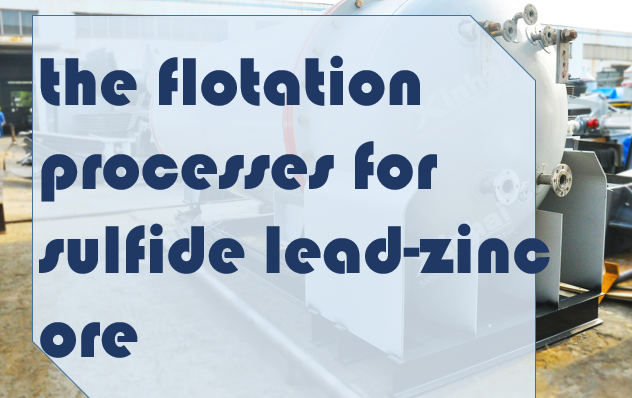The complexity of lead-zinc ores stems from the diversity of their structural structures, the richness of useful mineral species, and the close intergrowth of associated minerals, which makes flotation the main beneficiation process for processing such ores.
The flotation process of sulfide lead-zinc ores is diverse, including preferential flotation, fully mixed flotation, partially mixed flotation, equal floatable flotation, asynchronous flotation, and branched series flotation.
When the ore contains impurities such as iron sulfide minerals and copper sulfide minerals, these basic flotation processes will further evolve into a variety of process variants to meet different beneficiation needs.
According to the difference in the floatability of lead-zinc minerals, they are separated and recovered independently in turn. Preferential flotation has strong adaptability and high stability. It is suitable for ores with high lead-zinc mineral content, coarse intergrowth particle size, and loose symbiotic relationship. The monomer dissociation of minerals needs to be achieved during the grinding process.
The lead-zinc minerals are floated together as a mixed concentrate, and then separated to obtain a single concentrate. This method facilitates the timely removal of tailings and reduces the consumption of equipment and reagents; however, the mixed concentrate is covered with reagents, which increases the difficulty of separation. It is suitable for ores with low lead-zinc mineral content, fine embedded particle size, and close symbiotic relationship, which are easy to form intergrowths during grinding.

First, mix and float some target minerals in the ore, then suppress other minerals, and then activate and float the remaining target minerals, and finally separate to obtain a single concentrate. It is suitable for the situation where the floatability of several minerals in the ore is similar and the floatability is different from that of other target minerals.
Based on the floatability of lead-zinc minerals, minerals with similar floatability are mixed in turn, and then separated separately to obtain a single concentrate. This method avoids enhanced suppression and capture, and reduces the amount of reagents, but due to the complex process, it has high requirements for operation control and is suitable for lead-zinc minerals with different floatabilities.
In a single separation cycle, asynchronous flotation of lead-zinc minerals is achieved through different operating conditions. Each separation cycle can achieve full recovery of minerals and help enrich and recover associated minerals such as gold and silver. It is applicable to situations where the floatability of the same lead and zinc minerals is different.
The selection and application of these flotation processes should be determined based on ore characteristics, mineral composition and mineral processing objectives to ensure efficient mineral recovery and high-quality concentrate products.
© 2021 Yantai KZ Mining Processing Technology & Equipment Inc.